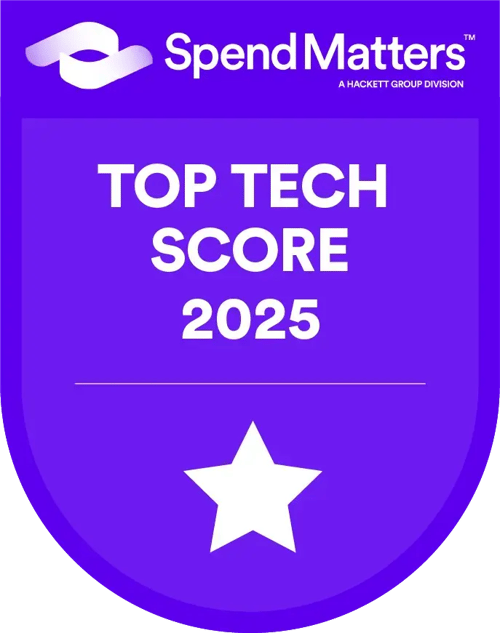Thought Leadership
The Future of Spend Management

Sammeli Sammalkorpi • Jul 6, 2017
The previous blog post on spend management described the evolution over the last decade until today. In this post, we shift the perspective to the future and provide a view of the trends currently emerging in the domain.
The future of Spend Management is driven by four strong forces:
- Complete automation in the cloud
- Expanding information footprint
- Leverage of big data
- Changing role of the user
Complete automation in the cloud
Despite all the talk on digitalization, the ugly truth is that most spend management processes still rely on various degree of manual input and human intervention – typically provided by service center employees in low-cost countries.
Regardless of how low-cost the available service is, a process depending on manual input has many downsides: delays in the process, limited update frequency, human errors, and high cost-to-serve. However, the most significant downside of an approach that relies on manual input is the lack of scalability. As long as the process depends on human input, there’s a limit on how much complexity the system can cope with before breaking down.
As the process gains more complexity and scale, an increasing amount of effort needs to be used to train existing and new employees to manage the process – at some point, the system just does not yield itself for improvements. To give a practical example – Can a spend analysis process be run based on manual processing? Yes. Can a daily updated scenario-based forecast be run based on manual processing? Probably not – and even if it could, cost-to-serve would be just too much to justify the business case.
Reaching such a level of automation is only possible for players who can sufficiently invest in such technologies – and these players are, at least for now, cloud-based spend management providers.
Expanding information footprint
Spend Management has, as the name suggests, focused on creating visibility on spend and a few other information components such as volumes and prices and has done so mostly based on transactional data from ERPs and financial systems. This is rapidly changing.
Modern Spend Management solutions provide tools to capture and manage more strategic information, such as savings actions, contracts, cost structures, forecasts, and the like. In addition to internal information sources, the future of Spend Management will see aggressive and automated integration of numerous external data sources – market prices, risks, and social media feeds, to name a few.
This provides better control on all these additional data sets than any Excel-based tool can. More importantly, however, this enables systematic discovery of opportunities and risks that can be only understood when data sets previously held in silos can be analyzed together. For example:
- Combining spend and contract information enables visibility on contract coverage.
- Combining spend and savings projects enables detailed control on savings leakage
- Combining forecasts and cost structure enables running scenarios on different commodity changes
- …
Leveraging Big Data
Yes, Big Data is mentioned. But, there’s a reason why so – undoubtedly Big Data will change, among other things, the world of spend management in many ways. Below are couple of my favorites.
Peer benchmarking will reveal significant opportunities and risks. Currently, most spend management is internally focused – improvement over the previous year, comparison to targets, and benchmarks between business units. This is the bread-and-butter of spend management solutions today.
This is going to change rapidly, the future spend management solutions will bring peer benchmarking capabilities to users. This means that any procurement metric (say payment terms or price development) can be compared to a peer group. Peer benchmarks are drastically different from traditional benchmarks in three ways:
- They are created automatically based on vast data amounts processed by cloud-based spend management players – any benchmark data point is likely based on hundreds of thousands or millions of data points. As they are automatically created, benchmark feeds can be updated on at least a daily basis.
- They are calculated to reflect the reality of the subscription client. There will not be “industry” or “category” benchmarks, but each client is provided with a peer benchmark, which is automatically calculated based on the supplier market that this client company faces.
- They are accessible through category and organizational structures of the client – this means that any benchmark data can instantly be compared on a category and supplier basis, making the benchmark data drastically more actionable than current static benchmarks of the industry.
Big data will be able to do risk identification way beyond what’s feasible currently. Based on information available on the internet (whether it’s traditional financial reports or social media buzz about supplier failure) as well as information in cloud spend management providers’ databases, risks related to certain areas of supply chain can be identified.
And, perhaps more importantly, by automatically combining this “generic” risk data with the spend and supply chain profile of a given company, spend management solutions can come up with notifications such as “Supplier X seems to have received less orders and also has delivery problems in its Italian plant – this is a sole supplier for you in subcategory X and the contract will renew in 3 months”.
Changing role of the user
The role of Spend Management users will change significantly. Currently, it takes relatively high analytical capabilities to fully exploit the insights available in spend data. This will change, consider Google as an example.
My mother can use Google – even though she has no idea (not that I would, either…) how Google works. However, she can use Google to find information, trust the findings and draw conclusions. The same will happen to analytics – bye-bye to controllers with magical Excel pivot skills and welcome to everybody as consumers of sophisticated, artificial intelligence-based recommendations.
So, instead of 1000 relatively good analytical minds, we will need 10 super-minds (to develop underlying software) and the other 990 can focus better on skills such as stakeholder management.
Photo credit: Unplash, @tomcchen
Open Positions
Welcome to explore our open job opportunities around the world
- Position
- Location
- Apply Before

